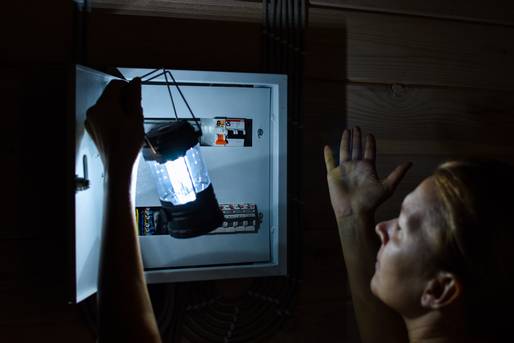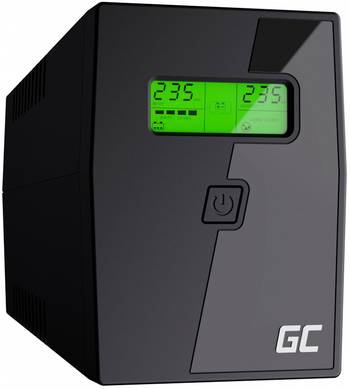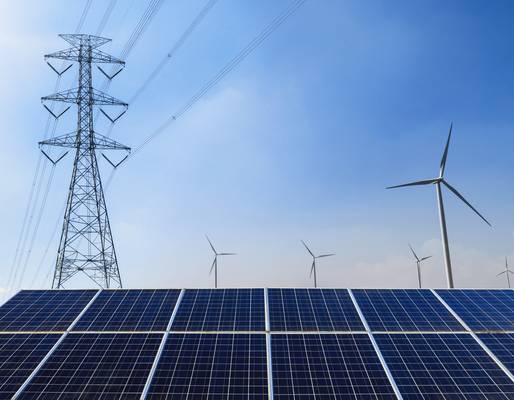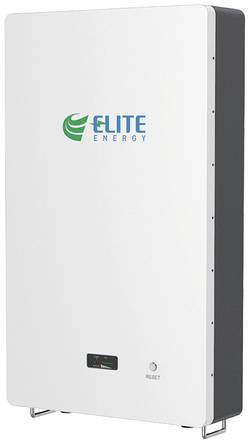Battery Energy Storage Systems (BESS) » Energy management of the future
Published: 27.02.2023 | Reading Time: 7 minutes
This text is machine translated.
Admittedly, a reliable power supply is both convenient and important in the home. After all, freezers and chest freezers can only maintain the required minus temperatures for a limited time in the event of a power failure.
In addition, most heating systems remain cold without electricity. Even if there was still enough fuel available.
In a business environment, however, power failures are far more than just a nuisance. After all, it is essential to maintain the most important operational processes and functionalities. However, even brief fluctuations in the energy grid are often enough to cause complex systems and installations to stop working.
Such problems already occurred years ago with personal computers when brief power interruptions caused the computers to crash. The solution used back then has proven itself and is still used today. However, modern BESS solutions are far larger and more powerful. We would be happy to show you the possibilities and potential of a battery energy storage system.
The abbreviation BESS comes from the English language and stands for Battery Energy Storage System. In this sense, the literal German translation of battery energy storage system is technically incorrect. After all, it is not batteries that are used in these systems, but rechargeable batteries. Unlike batteries, which have to be disposed of when empty, rechargeable batteries can be recharged. However, the term “battery storage” for a rechargeable energy storage system is now widely used in German, so we want to stick with it in this context.
As mentioned at the beginning, technically complex systems, such as computers, react very sensitively to fluctuations, reductions (brownouts) or interruptions (blackouts) in the power supply.
Not only does operation stop abruptly, but the data being processed at that moment and not yet saved is also irretrievably lost.
Resourceful development engineers recognized the problem early on and developed practical UPS devices as a solution. The term UPS is derived from the device description “uninterruptible power supply” and describes the basic function of the devices quite well. A UPS system contains one or more batteries that are charged via the mains. Although there are different circuit concepts for UPS systems, the basic function is always the same. In the event of a power failure, the UPS immediately takes over the reliable power supply to the connected computer. To do this, an inverter is used to generate an AC mains voltage from the DC voltage of the battery or batteries, which is then used to supply the connected device.
Even though the batteries used in the first UPS devices were not particularly large, the people using them were still able to save important data in the event of a power failure and then shut down the system properly. In this respect, the UPS devices of the time were also the first forerunners of today's battery energy storage systems. In the meantime, however, UPS devices have developed enormously, so that there are also powerful UPS systems for industrial applications.
In order to demonstrate how a battery energy storage system (BESS) works, we want to show the structural design and connection options of the individual components in more detail.
Rechargeable batteries
As already mentioned at the beginning, an energy storage system does not contain batteries, but rechargeable batteries (1). In contrast to the first UPS systems, which still worked with lead-acid batteries, modern energy storage systems rely on rechargeable batteries with lithium-ion technology. The reason for this is the extremely high energy density of the storage batteries. Even if the descriptions often refer to lithium batteries, they are primarily lithium-ion batteries or lithium-iron-phosphate batteries.
Control system
The controller (2) or Central Processing Unit (CPU) is primarily responsible for the energy management of the storage system. Depending on the situation, state of charge and energy requirements, the power output or power consumption is controlled and monitored. In some large systems, intelligent technology is already used in this area in order to be able to carry out predictive planning based on the available data.
Battery management (AM) ensures that the batteries are operated within the permissible parameters. This is because the limit voltages for charging and discharging must always be adhered to in order to avoid unnecessarily stressing or damaging the batteries. The control unit also has comprehensive safety functions and provides the necessary interfaces. This means that the current status of the battery storage system can be monitored and controlled at any time on site on the computer (3) or from any location via the cloud.
Inverter and charge controller
The batteries are connected to the inverter (4), which generates an AC mains voltage from the DC voltage of the batteries. This can then be used to supply a wide variety of loads in a house (5) or a company. It can even be fed into the public grid (6) if there is a surplus of renewable energy. The inverters often also function as charge controllers and enable the batteries to be charged in the opposite direction using the mains voltage.
In DC-coupled systems, there are still connections for solar modules (7) or wind turbines (8) on the inverter (see illustration). In AC-coupled systems (AC systems), the solar modules have a separate PV inverter that is designed for direct grid feed-in. In other words: AC-coupled energy storage systems are ideal for retrofitting existing photovoltaic systems with grid feed-in, where the inverters do not have a connection for a battery.
The example mentioned at the beginning with the UPS device shows quite impressively how even brief power failures on a single computer can cause significant problems. However, many computers are used in complex networks in companies, service providers and industry. It doesn't really take much imagination to visualize the enormous negative effects if entire systems suddenly crash or break down.
Optimists will draw on the positive experience of the past and continue to rely on the stability of the power supply network, which has been quite good to date. An argument that definitely cannot be dismissed out of hand.
However, the energy transition with the planned shutdown of power plants and the use of renewable energies are shedding a whole new light on the issue of grid stability. After all, wind and sunlight are known to be subject to considerable fluctuations.
In addition, electricity from renewable energy sources often cannot be produced where it is needed most. In addition, the demands on the electricity grid are also constantly increasing.
One of the main reasons for this is the increasing growth in electromobility and the charging processes required for this. Although the expansion of solar installations on private homes is being massively promoted, it is rather uncertain whether this will be able to compensate for the continuous increase in demand for electrical energy.
Battery energy storage systems not only ensure the operational safety of important technical installations and critical systems. In addition to protection against voltage fluctuations or power failures, the practical storage systems offer other decisive advantages that we would like to present to you.
Cover power peaks
A short-term increase in power requirements can be easily covered at any time without overloading or endangering the power grid.
Cost reduction
At night, inexpensive low-tariff electricity can be charged into the storage batteries, which significantly reduces the need for expensive high-tariff electricity during the day.
Renewable energies
Charging the storage batteries using your own wind power or photovoltaic system saves on purchasing expensive energy and reduces CO2 emissions.
Grid feed-in
Surplus renewable energy is fed into the public grid when the batteries are full, increasing the economic yield.
Individual scaling
The performance of a battery energy storage system can be adapted very easily and quickly by adding additional battery units.
Seamless controlling
Seamless data acquisition in real time provides a comprehensive overview and can be used for condition monitoring if required.
Battery energy storage systems can be used in a wide variety of areas.
Solar system for private households
As most of the electricity generated by the PV system is not needed during the day, it can be used to charge the battery storage system. In the evening, when electricity consumption is high, the electricity from the storage system is used to supply energy. As no electricity is purchased from the grid operator in this case, electricity costs can be drastically reduced. The energy storage units range in size from 4 kWh to 16 kWh (kilowatt hours).
Trade and industry
Larger systems are of interest to businesses and industry. In addition to the cost savings already mentioned, however, the focus here is on the reliable supply of energy to important systems and machines.
Electricity suppliers and grid operators
Even energy suppliers are taking advantage of battery energy storage systems. For example, wind farm operators are no longer forced to take some of their wind turbines offline simply because the wind is blowing at the moment but there is no demand for electricity. But the energy transmission lines or overhead power lines are also effectively relieved. For example, the lines can be used at night to charge the batteries of a large storage system on the receiver side. An energy storage system in the order of 20 MWh (megawatt hours) or more supports the energy supply when there is a particularly high demand for energy.
However, such energy storage systems are also perfect for ultra-fast charging of electric cars. This is because the charging process then takes place exclusively via direct current without burdening the alternating current grid.
Solutions in the past
The idea of storing energy in large quantities and calling it up when needed is nothing new. Pumped storage power plants were built over 100 years ago to quickly and quickly relieve the electricity grids at peak times. To this end, large quantities of water were pumped to a higher level at night when there was a certain surplus of electricity. When electricity demand was high, the returning water could drive turbines with generators to produce the required electricity. However, this application requires certain geographical conditions that are not found everywhere.
Current technology
Things are much simpler with energy storage batteries. They vary in size depending on their purpose and application. The output, or rather the electrical work, i.e. the output in a given time, ranges from a few kWh to several MWh. This means that fluctuations in the grid and bottlenecks in renewable energies such as solar and wind power can be ideally compensated for. High-capacity batteries and intelligent energy management are already making flexible solutions for different applications possible. However, alternatives such as flywheel storage or pumped-storage power plants on the seabed are also currently being researched and optimized.
A look into the future
In the foreseeable future, demand for electrical energy will continue to rise. Then we will no longer be talking about kWh or MWh, but about gigawatt hours (GWh). At the same time, the demands on electricity storage systems will also skyrocket. At the same time, however, more and more electrical energy will be generated due to the constant expansion of renewable energies.
But it is not only the power throughput that will increase in the future. Thanks to the steady growth in electromobility, battery development is also being driven forward intensively. It should soon be possible to store very large amounts of energy with organic batteries, for example.




